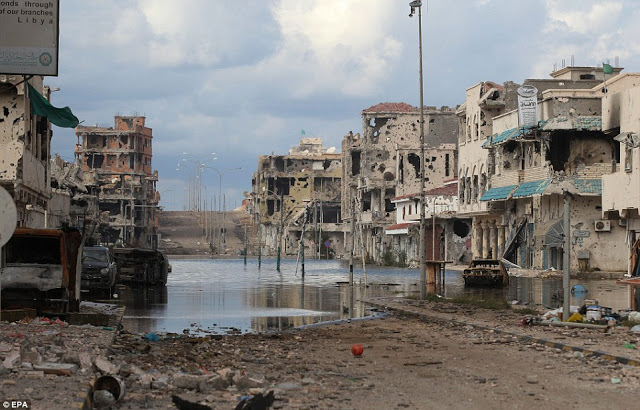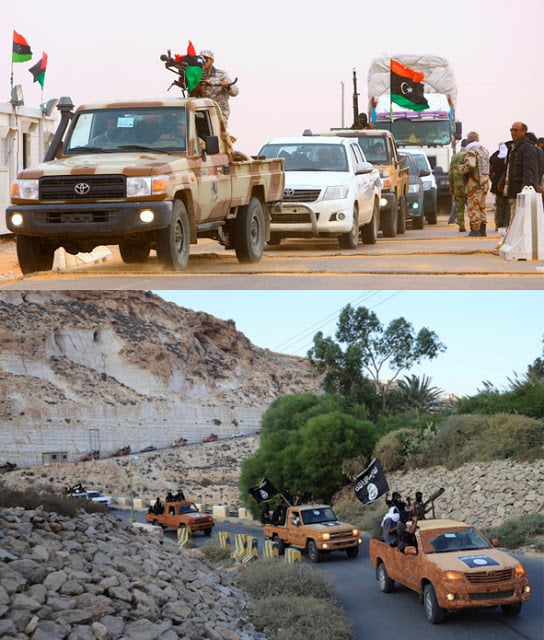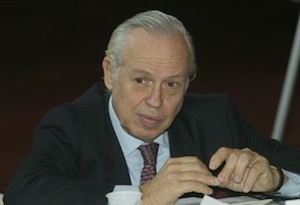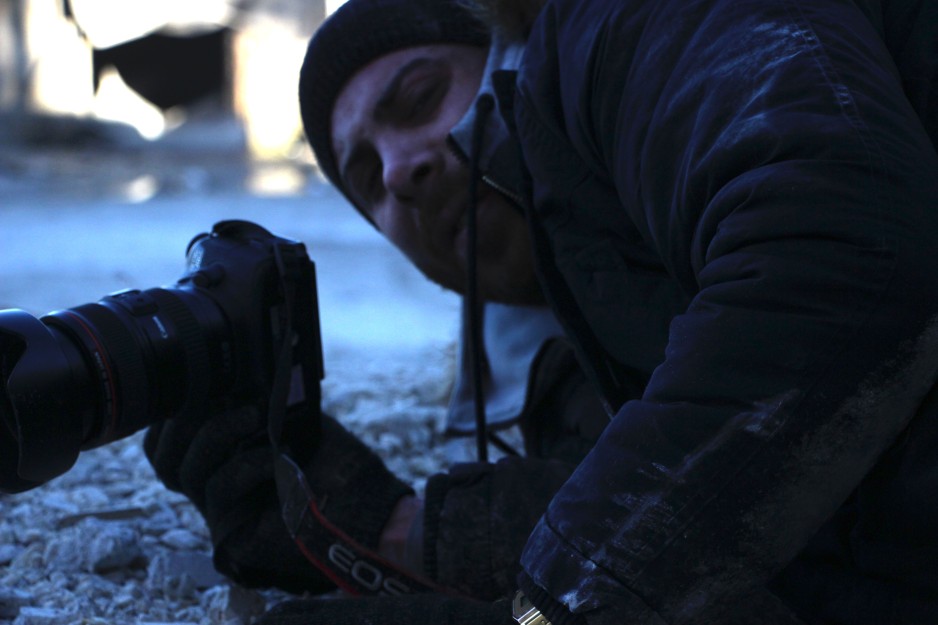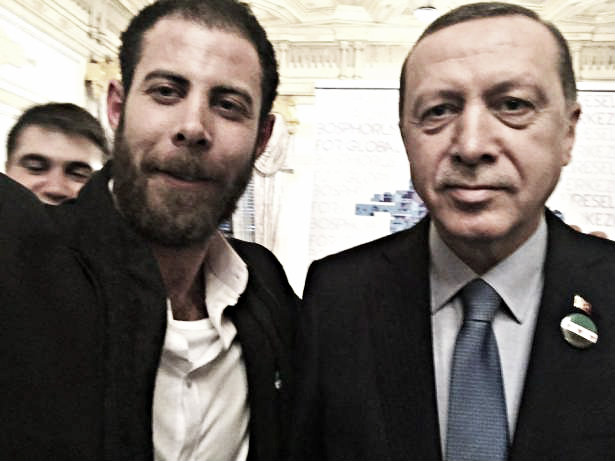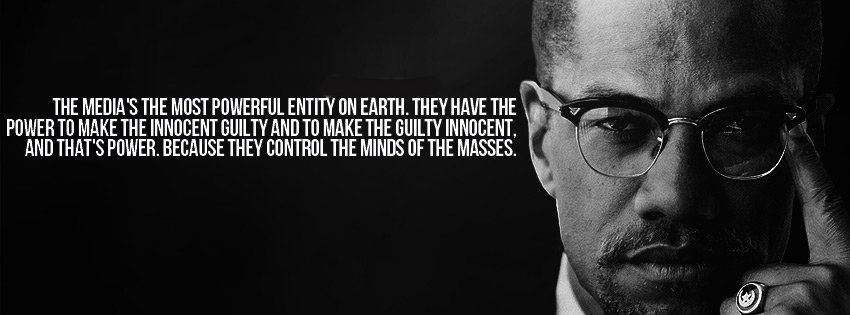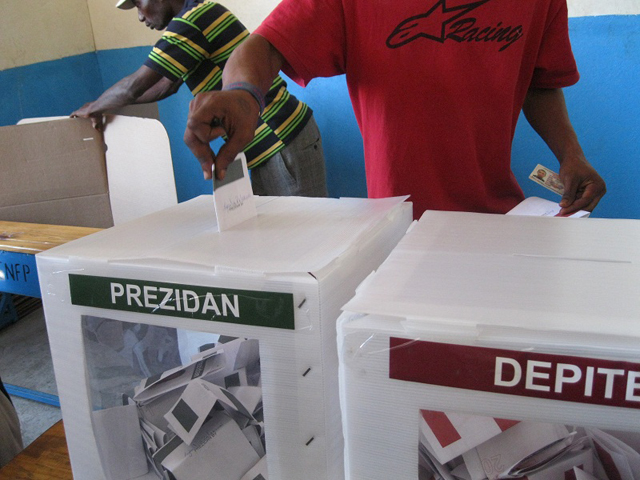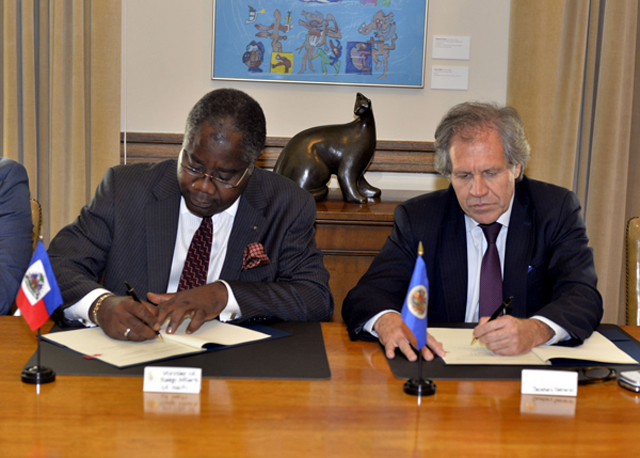Despite the fact the official U.S. strategy towards China ignoring Taiwan issue, the island may easily become a flash point of the ongoing confrontation. The main stream media constantly disseminate reports that the Chinese military prepares to invade the island or, in light versions, conducts provocative military drills. In case of the further US-China confrontation in the Indo-Pacific regions, it’s possible to expect an attempt to use the island for strengthening of U.S military presence in the region. An aggressive activity of U.S. special services through Taiwan is also expected.
Beijing would much prefer to reintegrate Taiwan without having to resort to force, but by cultural, economic and political tools. Moreover, it already has a successful experience of lost territories reintegration: Macau and Hong Kong. However, it will be thoughtlessly to ignore the possible crisis in the China-Taiwan relations.
Taiwan Military
The Republic of China Armed Forces (ROC Armed Forces or Taiwan Armed Forces), with 290,000 active personnel, ranks at number 16 for the world’s largest number of active personnel, with 1,657,000 personnel in reserve. The Republic of China or Taiwan, with a population of over 23 million people, is a sovereign island state close to Mainland China. There have been many political status disputes going on for decades between the Republic of China and the People’s Republic of China. Both parties were engaged in a civil war since some time during the middle of the second Sino-Japanese War (1937). In the year 2015, the ROC Armed Forces increased their military budget from US$10.5 billion in 2012 to $10.7 billion, with an ever-growing military threat from the PRC ; the latter having over 2.3 million active military personnel as of 2012. Chairman Xi Jinping announced in 2015 that the PLA will be re-organized and downsized to 300,000 personnel, however, despite a military budget of US$141 billion ranking at number 2 in the world and out spending Taiwan 13 to 1 in terms of military budget.
The ROC Armed Forces encompass the Army, Navy (including the Marine Corps), Air Force, and the Military Police. It was founded in 1924 while it was based in mainland China and was the successor of the National Revolution Army or KMT Army/Kuomintang Army ; literally ‘The People’s Party Army’, which played a big role in overthrowing the Qing Dynasty with the help of Sun Zhong-Shan (Sun Yat-Sen), which ended China’s millenniums of autocratic rule. They also fought against the Imperial Japanese military during the second Sino-Japanese War (1937 – 1945). By the year 1947, with the introduction of the Constitution of the Republic of China, the nationalization of the army took place and the KMT party no longer had control of the military; hence, it became the National Revolutionary Army. It was soon renamed to the Republic of China Armed Forces; however, still retained similar insignia. With the end of the Second Sino-Japanese war in 1945, the ROC Armed Forces resumed hostilities with the Chinese Communist forces or the People’s Liberation Army (PLA), with the PLA later forcing the ROC Armed Forces and its political elites and allies to withdraw into exile to the island of Taiwan.
Much of Taiwan’s military equipment was procured from the United States of America, with many other western nations supplying military equipment. The ROC military is styled after western military forces, but most closely the U.S. military. Internally, the ROC military has a political warfare branch/department that tightly controls and monitors each level of the ROC military, reports directly to the General Headquarters of the ROC military and, if necessary, directly to the President of the ROC. This is a carry-over from the pre-1949 era, when the KMT and its army were penetrated by Communist agents repeatedly, which led to front line units defecting to Communist China. To strengthen their control over the military and prevent massive defection after retreating to Taiwan in 1949, Chiang Kai-Shek and Chiang Ching-Kuo (his son) employed tight control over the military, by installing political officers and commissioners down to the company level in order to ensure political correctness in the military and loyalty toward ROC leadership. This gave the political officers/commissars a great deal of power, allowing them to overrule the unit commander and take over command of the unit. Only in recent years has the political warfare department (due to cutbacks) reduced its power within the ROC military.
Army
Estimated 130,000 active duty personnel serve with the Republic of China Army (ROC)
Forces by role:
Aviation and Special Forces Command (航空特戰指揮部)
- 101st Reconnaissance Battalion (better known as Sea Dragon Frogman, has a company station in Kinmen, Matsu, 3 in Penghu, and other frontline islands)
- Special Forces Command (特戰指揮部) in charge of 3 training centers
Special Operation Command
- 862 Special Operation Group (originally 862nd Special Operation Brigade, with 3rd, 4th, and 6th battalion that transferred back from aviation brigades)
- 871 Special Operation Group (units’ unknown)
6th Army Corps (第六軍團指揮部): Northern Taiwan
- 269 Mechanized Infantry Brigade
- 542 Armor Brigade
- 584 Armor Brigade
- 21 Artillery Command
- 53 Engineer Group
- 73 Signals Group
- 33 Chemical Warfare Group
8th Army Corps (第八軍團指揮部): Southern Taiwan
- 333 Mechanized Infantry Brigade
- 564 Armor Brigade
- 43 Artillery Command
- 54 Engineer Group
- 75 Signals Group
- 39 Chemical Warfare Group
10th Army Corps (第十軍團指揮部): Central Taiwan
- 234 Mechanized Infantry Brigade
- 586 Armor Brigade
- 58 Artillery Command
- 52 Engineer Group
- 36 Chemical Warfare Group
- 74 Signals Group
- Artillery Group
Penghu Defense Command (澎湖防衛指揮部)
- 1 Armored Battalion, 1 Armored Infantry Battalion, 1 Armored Cav Battalion, 1 mixed Artillery Battalion.
- 9 active infantry brigades, 24 Reserve brigades (Activated only in time of war)
ROC Army’s former Army Missile Command was transferred to ROC Air Force in 2006.
Equipment by type:
MBTs 810: 460 M60A3 TTS (US-made upgraded M60 Patton); 450 CM-11(Taiwanese assembled M48 Patton)
MTs 150: 100 CM-12; 50 M48A3
LTs 50: M41 Walker Bulldog
APCs over 1000: CM-21, M113, V-150S
Light utility vehicles 2000 – 2500: Humvee
Arty (SPG and TOWED) 1665+: 75 M110A2, M109A2/A5, M108, M1, M115, M59 “Long Tom”, M101, M712 Copperhead, Kungfung VI, RT/LT-2000
Helicopters 233+: AH-64E Apache, AH-1W SuperCobra, Bell OH-58D Kiowa, OH-6A Cayuse, Bell TH-67A Creek, Boeing CH-47SD Chinook, UH-60M Black Hawk, AIDC UH-1H Iroquois
UAV 32: Chung Shyang II UAV
AA (Air to Air) 473: AIM-9 Sidewinder & AIM-92 Stinger
AA (Surface to Air) 230+: Sky Sword II, MIM-72/M48 Chaparral, Sky Sword I, M-1097 Avenger, Dual Mounted Stinger & FIM-92 Stinger
Anti-Ship weapons (numbers not known) Hsiung Feng III, Hsiung Feng II
AT 3896+: Hellfire AGM-114L, Hellfire AGM-114K3, Hellfire AGM-114C, Hellfire AGM-114M3, BGM-71 TOW-2A/B, FGM-148 Javelin, APILAS, M136, M72 LAW & Hydra 70
Cruiser Missiles (Future production): Yun Feng & Hsiung Feng IIIE
Navy
38,000 personnel serve with the ROC Navy (9000 of which are Marines) with 117 ships
Equipment by type:
Principal surface attack combatants 28:
Destroyer 4: Kee Lung Class
Frigate 24: 8 Cheng Kung class; 6 Chi Yang Class; 6 Kang Ding class; 4 Oliver Hazard Perry class
Submarines 2: 2 Chien Lung Class
Patrol and Coastal Combatants 44:
Fast Attack Missile and Patrol ship: 12 Ching Chiang-class patrol ship; 31 Kuang Hua VI-class missile boat; 1 Tuo Chiang-class Corvette
Marine Corps:
Brigades (formerly divisions)
- 66th Marine Brigade ‘Vanguard’ ( 陸戰六六旅「先鋒部隊」 ), Taipei area, receiving M60A3TTS to replace M41 tanks [1]
- 77th Marine Brigade ‘Iron Guards’ ( 陸戰七七旅「鐵衛部隊」 ), Garrison brigade, CCK and other area all over Taiwan
- 99th Marine Brigade ‘Iron Force’ ( 陸戰九九旅「鐵軍部隊」 ), Kaohsiung
Groups
- Amphibious Armor Group ( 登陸戰車大隊 );
- 4 Amphibious Transport Squadrons ( 運輸中隊 ), 24+ tracks per squadron. 1st(AAV-7), 2nd(AAV-7), 3rd(LVT-5), 4th(LVT-5);
- 2 Amphibious Artillery Squadrons ( 砲兵中隊 ), mortars, 1st(LVT-5) and 2nd(LVT-5).
Equipment includes (not including small arms):
Tanks: M60A3 TTS; M41 Walker Bulldog; AAV-P7A1 Amphibious assault vehicles; LVPT 5A1 Amphibious assault vehicles; CM-25 AFV (CM-21 with 1 x TOW launcher); M101 Howitzer; M109 Howitzer; BGM-71 TOW-2A/B; MK-153 SMAW; FGM-148 Javelin; M40A1 recoilless rifle; Stinger DMS; MIM-72/M48 Chaparral; Hughes OH-6 Cayuse
Air Force
Estimated 35,000 personnel serves with the ROCAF with 523 aircraft
Main Combat equipment by type:
- Multi-role: 116 F-16A’s; 47 Mirage 2000s
- Fighters: 23 F-5E/RF-5Es; 102 F-CK-1
- Early Warning and Control: 6 E-2 Hawkeye
- ELINT (Covert Electronic intelligence gathering): 1 C-130 HE
- Maritime Patrol: 3 P-3C; 11 S-2
- Reconnaissance: 2 Beech 1900
Air Defense
SAM: 3(7 orders coming) Patriot PAC-2; 6 Skybow; 19 MIM-23 HAWK
AD: 24 Skyguard
Forces by role:
Air Force Combatant Command
- Weather Wing: Tamsui, New Taipei City
- Communications, Air Traffic Control & Information Wing: Taipei City
- Air Tactical Control Wing
Ground fixed and mobile long-range air search radar sites, consist of various TPS-117, TPS-75V, FPS-117, GE-592 and HADR radars, plus 1 PAVE PAWS (Phased Array Warning System) early warning radar site in northern Taiwan entered service late 2012.
Air Defense Artillery Command
- 4 Air Defense Missile & Artillery brigades, 951st (Taipei), 952nd (Taichung), 953rd (Kaohsiung), 954th (Hualien)
- 4 Air Defense Missile I-HAWK battalions, 621st, 622nd, 662nd, and 664th battalions, with Phase III and 7 Phase I batteries.
- 1 TK-1/2 Air Defense Missile battalion, 951st Brigade, 611st battalion with 6 companies/batteries.
- 1 Patriot PAC-2+ GEM/PAC-3 Air Defense/Anti-Ballistic Missile battalion, with 3 mixed companies/batteries that are all upgrading to PAC-3 standard, with 7 more PAC 3 companies/batteries on order.
- 1 Skyguard Short Range Airbase Air Defense battalion, with 6 companies/batteries and radar sub units with OTO 35mm AAA
- 2 Antelope Short Range Airbase Air Defense battalions, with unknown companies/batteries.
- At least 2 AAA Air Defense Artillery battalions, with 40mm/L60 and 12.7mm AAA guns.
Air Defense Artillery Training Center: Pingtung
- Target Service Squadron
- Education Service Support Company
- First training company
- Second training company
- Third training company
- Education, Training & Doctrine Command
Military Police
Estimated 16,000 personnel serve with the ROCMP
From the 2006 National Defense Report, Republic of China Military Police performs:
Military functions:
- Special security duties, including presidential protection,
- Counter-terrorism operations,
- Garrison security,
- Enforce military discipline,
- Support military operations,
- Supportive functions in civilian affairs:
- Execute military justice and law enforcement missions,
- Maintain public security,
- Adequately support regional disaster prevention,
- Response, and ensure social stability and national security.
The ROCMP is responsible for enforcing military law, maintaining military discipline, providing manpower and support for the civilian police force, performing combat duty in times of emergency, providing security for certain governmental facilities such as the Presidential Palace, and performing counter-terrorism and VIP Protection Operations. In an event of a military conflict the ROCMP is responsible for the defense of Taipei, the capital city and political and financial hub of Taiwan.
ROC Armed Forces Strategy
Hypothetically speaking, the adversary for the ROC Armed Forces would be of the Peoples Liberation Army, and it goes without saying that the size of the PLA outnumbers the ROC Armed Forces in terms of military expenditure and size, and that would definitely put the ROC Armed Forces at a disadvantage in any possible conflict. However, mainland China does not actively seek to invade Taiwan. The Chinese military buildup is useful for intimidating Taiwan and would be necessary if a decision was made to invade. Military power could also be used in situations short of all-out war, such as a blockade or some other demonstration of strength. Taiwan’s defenses are different from most countries because of the nature of its strategic position. Few countries see the need for surface-to-air missiles in land-based silos, nearly four-dozen fast missile boats, and a mountain hollowed out to shelter fighter aircraft. Mainland China sees the island 110 miles away as a rogue province — one that is only separated temporarily. China has not only oriented a considerable amount of military force against Taiwan, but has also politically isolated the island internationally.

Most Taiwanese locals would jokingly reveal to you that China has already invaded them with their hundreds and thousands of tourists and through countless aspects of commerce; however, one cannot avoid how Taiwan figures in China’s long-term strategic planning being part of the “First Island Chain”, the innermost defensive ring of islands that China considers essential for national defense. In the long term, controlling Taiwan is in China’s interests both to shield mainland China hypothetically from South Korea, Japan and the United States and as a springboard to operate into the “Second Island Chain”.
In an event of an invasion from the PLA, the ROC Armed Forces will be deploying a two-prong Naval and Air strategy:
Naval
The ROCN (Republic of China Navy), which had been the most neglected branch of the Taiwanese military, has been transformed into one of the most important due to the fact that there is a very high likelihood that the PLA would launch a Naval attack and lead an amphibious landing through the Taiwan Strait or perhaps from South China or East China Sea in any future conflict. With that in mind, the ROCN plays a major role in the overall defense strategy of Taiwan, because the ROCN with support from the ROCAF can defeat an invasion fleet at sea. The sinking of a large portion of amphibious transports not only takes a large percentage of ground force out of action, but also permanently degrades the enemy’s amphibious capability.
The ROCN has 28 main surface combatant ships armed with capable and potent anti-ship weaponry. The largest ships in the fleet are the four 10,000 ton Kee Lung-class guided-missile destroyers which sport two Mk.26 twin surface to air missile (SAM) launch systems armed with Standard SM-2 Block IIIA surface-to-air missiles, two Mk. 45 127mm guns, four Harpoon Block II anti-ship missiles and have a helicopter flight deck and hangar.
The eight Cheung Kung class guided missile frigates are a modified version of the long-hull Oliver Hazard Perry class. The class is armed with a Mk.13 missile launcher forward, capable of firing SM-1MR surface-to-air and Harpoon anti-ship missiles, and a 76mm Oto Melara gun amidships.
The frigates also carry eight Hsiung Feng II anti-ship missiles, giving the small ships a powerful anti-ship capability. Each carries an S-70 Thunderhawk helicopter, an export variant of the SH-60B Seahawk.
Taiwan has eight destroyers of the former U.S. Knox class destroyer, now the Chi Yang class. The ships mount the original armament of one Mk. 45 127mm gun and one ASROC launcher. The Chi Yang class has also been retrofitted with ten SM-1MR surface-to-air missiles in external canister launchers. The ships each carry one MD-500 ASW helicopter.
Rounding out the large surface combatants are the Kang Ting-class frigates. A modification of the La Fayette design, the Kang Ting frigates mount one 76mm gun and a naval Chaparral missile launcher for air defense. Eight Hsiung Feng anti-ship missiles are carried, and typically one S-70 Thunderhawk helicopter.
Taiwan has made a significant investment in small, fast missile patrol craft designed to take on much larger Chinese surface and amphibious ships. Twelve missile patrol combatants of the Jing Chiang class were built , each one of 680 tons displacement fully loaded with a 76mm gun and mine-laying racks.
There are also 34 smaller ships of the 150 ton displacement Kung Hua VI project class. Ships of both classes are each equipped with four Hsiung Feng anti-ship missiles. This diminutive fleet collectively weighs just over 13,000 tons combined displacement, but altogether packs a total of 184 anti-ship missiles.
The ROCN’s submarine fleet consists of just four aging submarines. Two are of the U.S. Navy Tench class, the Hai Shih and Hai Pao. Both were launched toward the end of the World War II and are used as training vessels. The other two submarines, Hai Hung and Hai Hu, are a Dutch design of mid-1980s vintage. Displacing 2,600 tons submerged, they were upgraded in 2013 with Harpoon II anti-ship missiles.
Taiwan has a modest-sized amphibious force designed to move army and marine units by sea during wartime. Equipped with one Hsu Hai Class Dock Landing Ship (LSD), formerly the USS Pensacola, one Chung Cheng class LSD, formerly the USS Comstock, seven Chung Hai class Landing Ship Tank (LST-1), four Mei Chin class Landing Ship Medium(LSM-1) and twelve Ho Chin class Landing Craft Utility (LCU). The force can land up to four companies of ROC Marine Corps AAV-7A1 amphibious assault vehicles or main battle tanks, and two companies of infantry.
Air
Simultaneously, the ROCAF also plays a huge role in maintaining air superiority and in deterring PLA efforts to gain air superiority over Taiwan. Most ROCAF aircraft were state of the art when they were purchased in the 1990s; however, time and China’s air power buildup have eroded their technological edge, opening up the possibility that China could successfully contest air superiority over the island.
The ROCAF has 116 F-16 A/B Block 20 multirole fighters currently upgrading to F-16V with the AN/APG-83 radar, armed with AIM-120 AMRAAM air-to-air missiles. It also operates 47 Mirage 2000 multirole fighters, armed with Magic air-to-air missiles, and 23 F5-E/RF-5E fighters that are slowly being phased out of front line service. Taiwan’s main fighter inventory consists of 102 Ching-Kuo Indigenous Fighters, armed with locally developed Sky Sword II air-to-air missiles.
Taiwan’s fleet of support aircraft includes six E-2 Hawkeye airborne early-warning and air-control aircraft, upgraded with APS-145 radars. One C-130 Hercules transport was converted into an electronic warfare platform, while two ROCN S-70 Thunderhawks have been configured as signals intelligence collection aircraft.
The ROCN operates 20 S-2 Trackers as maritime patrol aircraft. Procured in the 1990s, these aircraft are to be replaced by a dozen P-3C Orions. The ROCN currently has 4 out of the dozen P-3C Orions on order, which will possibly be completed in the current year of 2016.
In the event of war, the ROCAF’s air bases will come under heavy air attack, both by aircraft and missiles. China’s Second Artillery Corps has an estimated 1,500 conventionally armed short range ballistic missiles, many of which will likely be used in the counter-air role. Estimates are that it would take 50 direct hits to close a ROCAF air base to air operations. The ROCAF is prepared to keep air bases open while under attack. Taiwan has the Rapid Runway Repair System, used by the U.S. Air Force, to repair runways damaged by enemy attack. The ROCAF also has the Port Arrest P-IV mobile aircraft arresting system for landing aircraft on damaged runways.
The ROCAF has invested considerable resources in hardening base facilities. Chiashan Air Base, on the island’s eastern coast, includes a hollowed-out mountain that serves as a refuge for up to 100 Mirage 2000-5 and F-16 fighters. Two airfields serving the base are both at least 7,500 feet long. Chiashan is also a designated command post for counterattacks mounted by Taiwan against invading forces.
A second facility buried inside a mountain is Hengshan Command Center. Located on the outskirts of Taipei, Hengshan was completed in 1982 and serves as the national military command center in both peace and war. In wartime, it serves as the seat of Taiwan’s civilian government.
The air force also operates the nationwide air defense network, with 11 early warning sites overall. Main air defense is provided by Taiwan’s indigenously produced Tien Kung II surface-to-air missiles. Radar guided, the Tien Kung II has a range of 125 miles and is deployed at six bases, four on Taiwan and two on nearby island groups.Each base includes 80 missiles in underground silos and two target illumination radars. A range of 125 miles means Tien Kung missiles could theoretically engage targets over the mainland. Taiwan also has seven Patriot missile batteries, which are converting from PAC-2 to PAC-3 status. Patriot missiles are concentrated around the cities of Taipei, Greater Taichung and Greater Kaohsiung.
Asymmetrical Forces
Smaller defense budgets and an overwhelming Chinese conventional force have moved Taiwan toward asymmetrical systems and an anti-access, area denial capability all its own. Rather than matching China ship for ship and plane for plane, Taiwan is fielding systems that imperil China’s ability to operate in the Taiwan Strait.One such example is the Hsun Hai, or “Swift Sea” program of small missile corvettes. The catamarans are capable of 38 knots and designed to have a minimal radar signature. Armed with eight Hsiung Feng II and Hsuing Feng III anti-ship missiles, the Corvettes have been dubbed “Carrier Killers” by the local Taiwanese media. The first, Tuo Chiang is currently in service with 12 more ships planned.
Submarines stand to be a key pillar of Taiwan’s asymmetrical approach. “After Taiwan has lost air and sea control, it’s the subs that will still be able to attack groups of amphibious landing aircraft,” Wang Jyh-perng, ROCN Reserve Captain told the Asia Times in 2011. However, no diesel-electric submarine builder will sell Taiwan new submarines, as they face a great deal of pressure from the Chinese government.
In January of 2014, ROCN headquarters announced a 15-year upgrade plan for naval forces. Under the plan, a local shipbuilder has been directed to determine the feasibility of locally built submarines. As of 2015, many Taiwanese officials have spoken of their intent to secure international assistance before developing an indigenous submarine. However, the U.S. has not constructed a diesel electric submarine since the late 1950’s, but could provide design engineers. Additionally, they could work with Japanese shipbuilders who make excellent diesel electric submarines. The U.S. could also relax export controls on items needed to build the submarines. Several U.S. defense contractors have solid working relationships with Taiwan. In 2002, when the U.S. Navy discussed options with the ROCN, General Dynamics, Northrop Grumman, Lockheed Martin, and Raytheon all expressed interest in being the prime contractor. All of these companies have maintained interest in Taiwanese defensive capabilities. Working with a U.S. company to design an ROCN submarine could set Taiwan on an accelerated path towards development while giving Taiwan control over production and manufacturing.
Another option is to use the blueprints of an existing model and customize it to fit the ROCN’s requirements. Japan is both capable and possibly willing, with the right encouragement, to assist Taiwan in constructing diesel-electric submarines. A transnational industrial cooperation with Japan could help strengthen the security partnership between defense ministries that face the same threat.
Enlistement
Another trend that is complicating Taiwan’s defense strategy is the planned transition from a conscript military to an all-volunteer military. Social trends are undermining the existing draft system, as the system is growing unpopular and demographics are lowering the pool of potential manpower. All volunteer forces have dramatically higher personnel costs, and Taiwan’s defense budget has remained low. If Taiwan cannot offset these costs with additional defense spending, it seems inevitable that the military will face a new round of reductions.
Conclusion
The eyes of the Chinese world are on Taiwan’s recently elected, first female President Cai Yingwen, who will take office on 20th May, 2016 and as to how she will be handling cross-strait affairs. Regardless, Taiwan is playing a difficult hand. Seceding from the mainland outright would likely invoke a military response and anger its strongest ally and supplier, the United States of America. Matching China militarily is no longer possible, as China out-spends Taiwan in military budget by a factor of 13 to 1. A hardline stance is increasingly looking unviable.
On the other hand, strong ideological differences make reunifying with China to be unpalatable for most Taiwanese. Taiwan is taking the middle ground of trying to maintain its economic position and higher standard of living relative to China, while deterring invasion by tailoring its military to specific threats and through other diplomatic negotiations with China. Taiwan may not be spending as much on defense as it should, but it has accepted the strategic realities.
